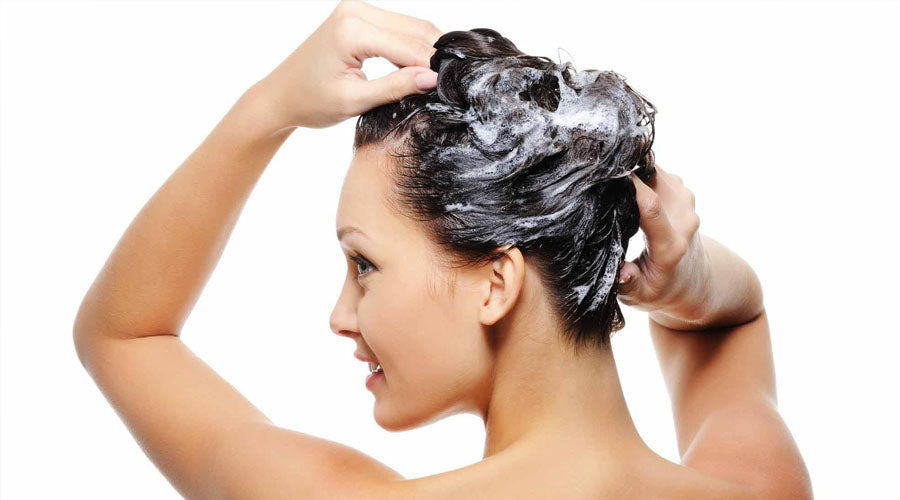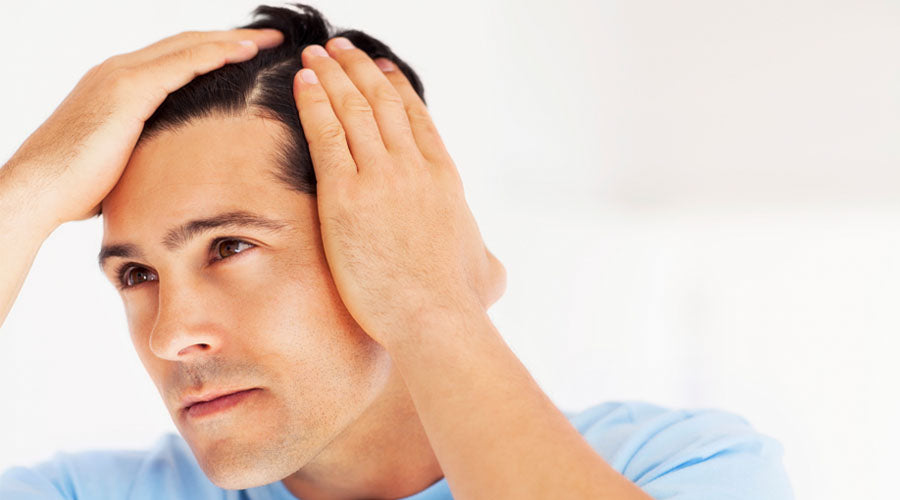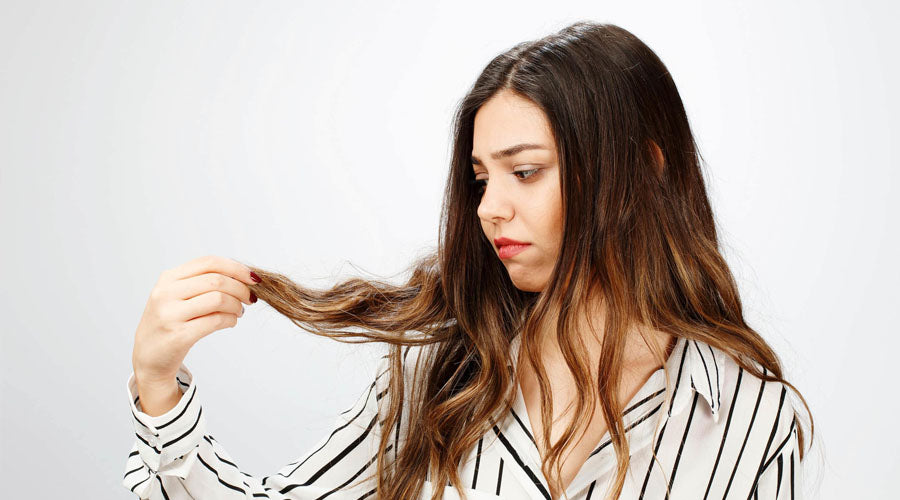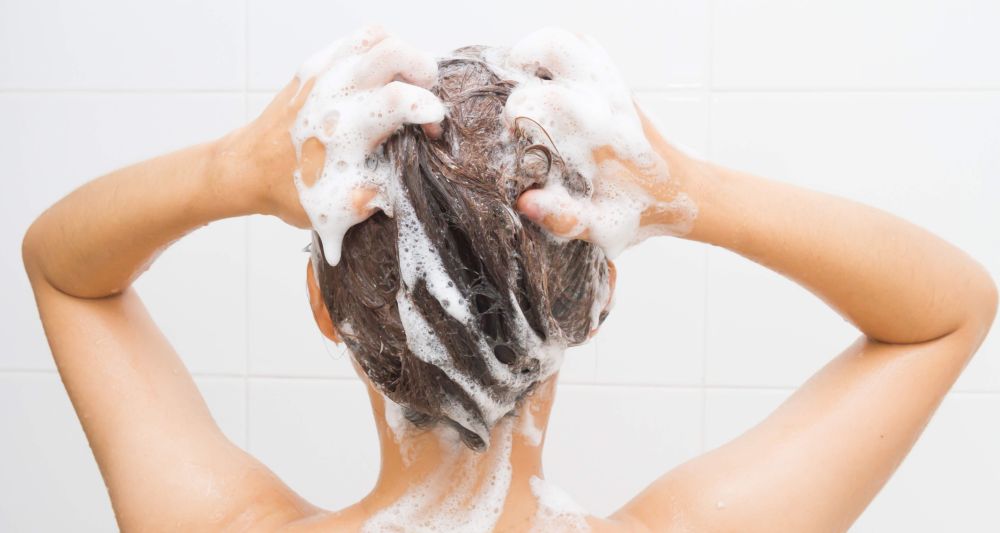Struggling to improve the quality of your hair? Make sure you aren't unknowingly making things worse by using these dangerous ingredients.
Table of contents:
How do hair care products work?
Common toxins in hair care products.
Signs your hair products are damaging your hair.
How to protect your hair from damage.
In the US, it should be safe to assume that the hair care products sitting on store shelves are safe to use.
After all, we do have organizations in place to monitor these types of things, right?
Not quite.
The FDA has some pretty loose loopholes that allow damaging ingredients to infiltrate our hair care - ingredients that are banned in other countries like those in Europe.
So what’s a girl or guy to do? Ditch all hair care and live with limp locks in the name of “living clean”?
Keep reading to identify which ingredients you need to avoid, discover the signs your hair is in distress, and what you can do about it moving forward.
How Do Most Hair Care Products Work?

Before we dig into what could be damaging your hair, let’s first take a look at how most shampoos and conditioners work.
Many shampoos work by disrupting the hair’s natural oils (sebum) and making them penetrable by water, so they can then be washed away. They also contain detergents (including the same kind used in commercial car washes) that bind to sebum and strips it from the hair.
Dry, stripped hair is left behind, which is then remedied by coating it in conditioners containing smoothing chemicals.
Today, we’d like to pose the idea that there’s a better alternative to this chemically based “strip then coat” technique that we’re all accustomed to.
6 Common Toxins in Hair Care Products

You’ve probably already heard about parabens and alcohol, but here are 6 more dangerous ingredients lurking in your hair care.
- Sulfates (SLS, ALS, SLES): Sulfates work via a chemical reaction to bind to and remove sebum. The problem is they do such a “good job” at stripping every drop of oil that they’re used as engine degreasers. In the process, they strip your hair of its peptides and proteins, leaving dry, damaged, brittle hair in its tracks.
- Polyethylene Glycols (PEGs): This is what makes your hair products thick and creamy - just like the petroleum they’re derived from. Toxicological Research studies not only admit that there is little information available on their safety, but that they’re often contaminated with toxic byproducts like dioxane and even lead.
- DEA and TEA: These are used as foaming agents and to make hair care products creamier. Here in the states, researchers revealed a link between DEA and cancer in animals. Go overseas and you’ll find that DEA is banned in European cosmetics due to their ability to form cancer-causing nitrosamines when combined with nitrites - a common additive and preservative.
- Dimethicone: You can thank this form of silicone for that greasy buildup you feel after using certain products. It wraps around your hair like a thin plastic covering, blocking moisture from coming in and collecting dirt and residue. The result is hair that seems heavy, lifeless and greasy, despite being recently washed.
- Formaldehyde: Yes, the stuff used to embalm bodies. It is a known carcinogen and can hide in hair care products under other names. Formaldehyde can also be released via chemical reaction by other product preservatives (but manufacturers don’t have to disclose that on the label).
- Synthetic Fragrances: If your hair products smell good, check the label. You’ll probably see the word “fragrance” listed with no actual ingredients identified. The EWG says about 75% of products with “fragrance” contain toxic phthalates that are banned in other countries like Canada. Fake scents have also been linked to cancer and reproductive distress.
Now think about what happens to all those chemicals as you rinse your hair. Yep, they coat your entire body on their way out.
That is why it’s just as important to pay attention to what you put in your hair as to what you put on your skin.
Because ultimately, it all gets absorbed the same way.
3 Signs Your Hair Products Are Damaging Your Hair

Maybe you checked your shampoo bottle and found some unpronounceable words, but you’re still not sure if your hair is being affected. Here are 3 surefire ways to identify hair damage.
1. Extreme Hair Breakage
Hair breakage can be caused by many things, but the most notable cause is continuous exposure to chemicals. That includes those hidden chemicals tucked under vague terms like “fragrances” and “colors.”
Drying ingredients like alcohols and sulfates are especially damaging. Frequent breakage stunts hair growth and can undo years of working toward long, luscious locks (if that’s your goal).
2. White Residue on Your Scalp
In our modern era, it’s easy to overdo it with hair styling products. Every product you use adds an additional layer of coatings and chemicals that can build up on your scalp.
If you see a white filmy layer on your scalp or even something that looks like dandruff (but isn’t), you may want to rethink your hair care routine. Such buildup prevents your scalp from absorbing things properly, making you use a higher volume of product to achieve the same effect - all while continuously adding to the gunk that’s blocking your pores.
3. Stiff and Frayed Hair
Does your hair refuse to hold its shape? Does it have a straw-like texture or frayed ends? These are signs of chemical damage and over processing. This is due in large part to the stripping nature of most shampoos. They block your hair’s natural oils that help keep strands moisturized. Overuse leads to stiff, easily tangled hair.
How to Protect Your Hair from Damage

Obviously, the big one here is to use non-toxic hair products that nourish your locks instead of strip them of moisture and coat them in chemicals.
But here are a few more tips to help you protect against and restore damaged hair:
- Don’t Brush When Wet: Your hair is weakest when it’s wet, so don’t go running a brush through it straight out of the shower. Instead, opt for a wide-toothed comb and work out tangles from the bottom up.
- Don’t Wash Every Day: Stylists say hair only needs shampooing every 3 days or so. If you have a particularly sweaty or dirty day, try washing your hair with just water and conditioning the ends. This will give your hair a break and prevent your scalp from producing too much oil (caused by the constant stripping).
- Use Heat Sparingly: Any heating tools you use, start out with the lowest setting and work your way up if need be. Remember that heat alters the hydrogen bonds that hold hair together, so limit heat styling as much as possible.
Ultimately, consider making the switch to botanical hair care products like our toxin-free shampoos and conditioners, featuring nourishing ingredients like argan oil, manuka honey, aloe vera and more.
The plant-based ingredients we use can:
- Moisturize your scalp
- Strengthen hair follicles
- Reduce frizz
- Repair damage
All without harsh chemicals that can build up over time to toxicity levels with links to cancer, asthma, reproductive issues, eczema and more.
Transitioning away from using sulfates, parabens, formaldehyde and other toxins, and implementing the hair repair tips discussed above will help keep your hair healthy and you happy for years to come.


